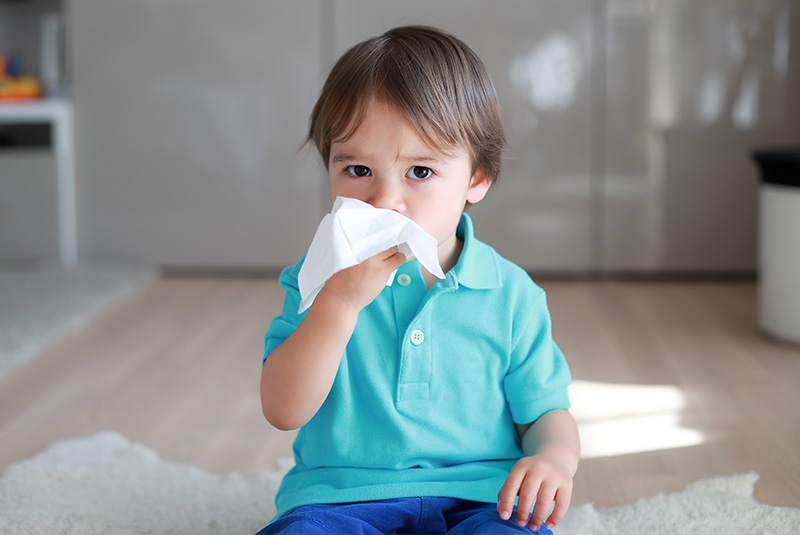

You are now leaving GSK’s website and are going to a website that is not operated/controlled by GSK. Though we feel it could be useful to you,we are not responsible for the content/service or availability of linked sites. You are therefore mindful of these risks and have decided to go ahead.
Agree Agree Agree Stay
Seasonal flu, or influenza, is a contagious respiratory illness affecting billions of people worldwide each year 1. It can lead to mild or severe illness and, in some cases, can be fatal 1. While anyone can contract the flu, certain groups - including young children, the elderly, and individuals with preexisting health conditions or weakened immune systems - are at higher risk 1,2. In fact, most hospitalisations and deaths related to the flu disease occur within these high-risk populations 1.
Vaccination is an effective way to protect both adults and children from the flu 1,3. In this blog, we will cover important information about the flu disease, including its symptoms, complications, preventive measures, and the critical role vaccination plays in reducing the spread and severity of the illness.
Influenza is an acute viral infection that attacks the respiratory system, including the nose, throat, and lungs. It is caused by influenza viruses that spread through droplets released into the air when an infected person coughs, sneezes, or talks. These respiratory droplets can infect people nearby. Additionally, the virus can spread through hands contaminated with influenza viruses 1,4.
Transmission occurs rapidly in crowded environments such as schools and nursing homes 1.
Among the four types of influenza viruses, only types A and B are responsible for seasonal epidemics 1,5.
Flu disease is prevalent worldwide, causing around one billion cases annually, including 3-5 million severe instances 1. The virus causes between 290,000 and 650,000 respiratory deaths annually, especially among high-risk groups 1,4.
While flu can affect anyone, certain groups are more at risk 1,4:
An effective way to lower the risk of flu disease and its serious complications is by getting a flu vaccination each year 1,3,4.
The incubation period for influenza, which is the time from exposure to the virus until symptoms begin, is usually about 2 days but can range from 1 to 4 days. This means flu symptoms generally appear around 2 days after exposure to an infected person 1.
Flu symptoms are similar across all age groups and can vary from mild to severe 1,4. Mild symptoms typically appear suddenly and may include 1,2:
It's important to note that not everyone with the flu will have a fever 2, and the cough can be quite severe, sometimes lasting 2 weeks or longer 1.
Most people recover from fever and flu symptoms within a week, but some individuals may develop severe symptoms that require immediate medical attention 1.
Severe flu symptoms to watch for include -
In children 2:
In adults 2:
If any of these symptoms appear, seek medical care immediately, especially for children, the elderly, or those with pre-existing conditions.
Along with severe symptoms, some individuals may be at risk of serious complications that can be life-threatening and even fatal 2. These complications are more likely to occur in high-risk individuals and may include 2,1:
Death due to flu disease primarily affects high-risk groups. In industrialised countries, most flu-related deaths occur in people aged 65 and older. Research shows that in developing countries, 99% of flu-related deaths in children under five are associated with lower respiratory infections 1.
Flu vaccination is a safe and effective way to protect adults and children from influenza 3. It works by stimulating the body's immune response to the virus without causing the illness 6.
Here’s why getting the flu vaccination is important 7:
For parents, consider the 7-Star Protection Programme, which includes the flu vaccination along with other vital vaccinations such as Hepatitis A, Chickenpox, Rubella, and more. Consult a paediatrician to learn about the 7-Star Vaccination schedule and ensure your child is fully protected against these potentially serious illnesses.
Additional measures to reduce the spread of influenza viruses 1,3:
Seasonal flu is a contagious respiratory illness that can affect anyone 2, but there are effective ways to protect yourself and your family 3.
Flu vaccination is a safe and effective way to protect adults and children from the virus and its potential complications 1,3. By getting vaccinated each year, you can protect yourself and help prevent the spread of the flu within the community 7.
Stay proactive this flu season - get vaccinated and encourage those around you, especially those in high-risk groups, to do the same.
References
